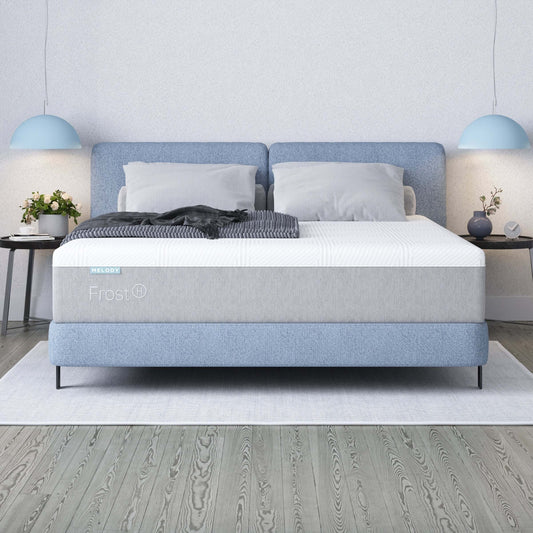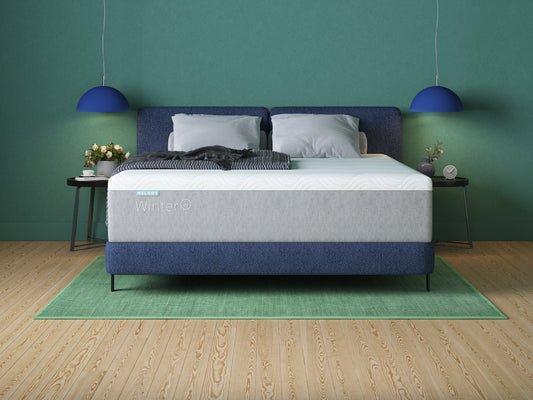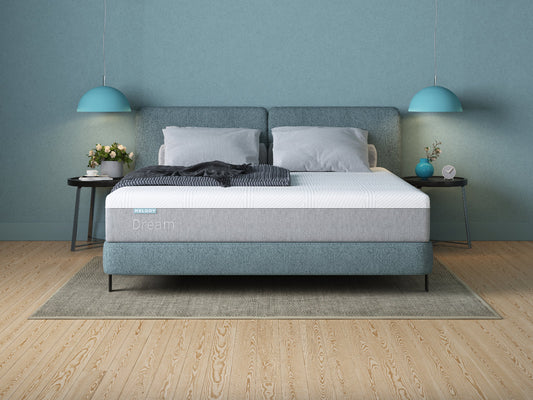You know the feeling: after a long morning of back-to-back meetings or lectures, your eyelids start to droop, and your brain feels like it’s running on empty. Maybe you’ve heard that taking a nap will just make things worse — that you’ll wake up even groggier than before.
But here’s the truth: not all naps are created equal, and the secret to waking up refreshed (instead of blur like sotong) lies in the timing, not the nap itself.
Many Singaporeans still shy away from napping, especially at work, due to our kiasu culture and the fear of looking lazy. But science shows that a well-timed nap can boost your mood, sharpen your focus, and give you the energy to power through the rest of your day.
The trick? It’s all about how long you nap. Too short, and you might not feel the benefits. Too long, and you risk waking up in the middle of deep sleep — that’s when the dreaded grogginess, or “sleep inertia”, hits.
So, if you’ve ever wondered why your quick 10-minute shut-eye leaves you feeling like a new person, or why a 1-hour nap sometimes makes you feel worse, you’re not alone.
Here, we’ll explain how long a nap should be and what other factors can affect how you feel after waking up.
It’s time to debunk the myth: with the right strategy, a nap isn’t a recipe for grogginess — it’s your secret weapon for peak performance.
The Science Behind Napping
Before discussing the ideal nap durations, you need to understand the science behind napping.
Napping taps into your body's natural sleep cycles every night. A full sleep cycle typically lasts about 90 minutes and includes stages of light sleep, deep sleep, and REM (Rapid Eye Movement) sleep.
The length of your nap determines which stages of sleep you enter, and this greatly influences how refreshed or groggy you feel afterward.
What’s the Ideal Nap Duration?
When it comes to napping, longer isn’t always better. The key is to match your nap duration to your energy needs and to where you are in your day.
Let’s break it down:
1. 20 Minutes — The Power Nap (Best for a Quick Refresh)
This is the sweet spot if you just need a quick break. In 20 minutes, you'll stay in the lighter stages of non-REM sleep, which means you’ll wake up easily without that groggy, “where am I?” feeling.
Perfect for:
- Midday recharge at work
- Post-lunch energy slump
-
A quick break between meetings or errands
Benefits:
- Improved alertness
- Sharper focus
-
Better mood
👉 Pro Tip: It’s not only about the best power nap duration but also the right environment. Try napping in a quiet spot like a library or a co-working lounge. Also, set a timer and wear a light hoodie or bring a foldable travel pillow for comfort.
2. 60 Minutes — The Deep Recovery Nap (Best for Mental Boost)
At around the 60-minute mark, you enter slow-wave sleep, which is the deeper, restorative phase of your sleep cycle. This is where your brain consolidates memory and processes emotions.
Perfect for:
- Students preparing for exams
- Busy professionals catching up on rest
-
Anyone who had a poor night’s sleep
Benefits:
- Boost in memory retention
- Emotional reset
-
Long-lasting mental clarity
👉 Heads-up: You might feel a bit groggy right after waking up (known as sleep inertia), but once that passes, you’ll feel mentally sharper.
3. 90 Minutes — The Full Sleep Cycle Nap (Best for Full-Body Recovery)
This is the grand nap — a full sleep cycle from light sleep to REM (rapid eye movement) sleep and back. You’ll wake up at the end of a cycle, which means less chance of grogginess.
Perfect for:
- Shift workers (like nurses, security staff)
- New parents catching up on broken sleep
- Anyone who has a sleep debt to repay
Benefits:
- Physical and mental recovery
- Boosted creativity and problem-solving
-
Reduced fatigue for the rest of the day
👉 Real talk: It’s not always easy to find 90 minutes during a busy Singapore day, but if you can spare it (especially on weekends or when working from home), this nap is gold.
Summary Table of the Best Nap Durations
🔎 Explore Melody Sleep Solutions to Improve Your Naps
When to Nap for Maximum Benefits
Timing your nap is just as important as its length. Napping too late in the day can interfere with your nighttime sleep, while napping too early might not provide the reset you need.
The optimal time for a nap is typically between 1:00 PM and 3:00 PM. This timing aligns with your natural circadian rhythm, which often includes a dip in energy levels in the early afternoon.
For Singaporean readers, this timing is particularly relevant given the typical workday structure. A short nap during lunchtime or an afternoon break can help combat the post-lunch slump and improve productivity for the rest of the day.

When NOT to Nap: Timing and Health Considerations
As much as naps can give you a solid energy boost, there are times when napping might mess things up, especially if you’re already struggling with sleep at night or your nap timing is off.
Here’s when you might want to skip the nap or be extra cautious.
1. If It’s Too Late in the Day
If you nap too close to bedtime (say, after 4 or 5 PM), you risk interfering with your natural sleep-wake cycle. By then, your body starts winding down for the night, and a nap could confuse your internal clock.
🚫 Example: You nap at 6.30 PM after work, but by 11 PM, you’re tossing and turning in bed — now you’re stuck in a vicious cycle of bad sleep.
What to do instead: Try light movement, like a short walk or a warm shower, to refresh without disrupting sleep.
2. If You Have Insomnia or Sleep Disorders
If you already have trouble falling asleep or staying asleep at night, napping during the day might make the problem even worse. For those with chronic insomnia, naps can reduce the body’s pressure to sleep at night, making bedtime harder.
🚫 Example: You’ve been napping every afternoon, and you find yourself wide awake past midnight even though you’re exhausted.
What to do instead: Focus on sleep hygiene — keep regular sleep and wake times, get a comfortable pillow, reduce screen time before bed, and create a calming wind-down routine.3. If You’re Using Naps to Mask a Deeper Issue
If you’re constantly tired and rely on naps to get through the day, it could be a sign of something deeper, like sleep apnea, poor sleep quality, or even nutritional deficiencies.
🚫 Example: Regular naps become your go-to, but you never feel fully refreshed, even after napping for a long time.
What to do instead: Consider seeing a specialist or getting a sleep assessment (some clinics in Singapore offer overnight sleep studies). Also, check your sleep environment—is your mattress or pillow affecting your rest?
🛏️ Compare Our Mattresses and Find the Best Solution
Recommended Nap Durations Based on Your Lifestyle
What you do and how your daily routine looks strongly affect your nap recommendations. Take a look:
Benefits of Napping: More Than Just “Feeling Better”
Napping isn’t just about fighting off the 3 PM crash — it’s a powerful tool backed by science that can upgrade your brain, body, and overall mood. A short rest during the day can actually lead to long-term gains in performance, wellness, and emotional health.
Here’s what the research (and real life) says:
1. Cognitive Boost — Sharper Focus, Better Decisions
A well-timed nap can significantly improve attention, problem-solving, and mental clarity. Perfect for when your brain feels like it’s running on a 1-bar battery.
Interestingly, studies show naps improve alertness and performance just as well as caffeine, but without the crash.
🧠 Example: After a 20-minute nap, you return to your meeting feeling sharper, less forgetful, and more confident to contribute.
2. Improved Mood — Say Bye to the Crankiness
Feeling snappy or irritated? A nap can reset your mood and reduce emotional reactivity. It helps regulate emotions and stress hormones, making you less likely to yell at the next person who cuts your queue.
😊 Example: You’re irritable after a late night, but after a quick lunchtime nap, you feel calmer and more sociable during your team call.
3. Better Memory — Especially Useful for Students
Naps strengthen memory consolidation, especially when you’re learning new things. Whether it's textbooks, Mandarin vocab, or Excel formulas — a nap helps lock it in.
📚 Example: A 60-minute nap after studying for your Uni finals helps reinforce what you’ve revised, boosting recall later on.
4. Metabolism Support — Naps Help Your Body Reset
Lack of sleep increases cravings and can mess with your blood sugar levels. Short naps may help regulate appetite and improve insulin sensitivity, supporting healthy metabolism.
🥗 Example: Instead of reaching for a second bubble tea after lunch, you take a nap and feel more in control of your cravings.
5. Reduced Stress — Your Midday Reset Button
When you’re overwhelmed, a nap can bring your nervous system back into balance. Just 20–30 minutes can reduce cortisol (stress hormone) and ease mental fatigue.
🧘 Example: After handling back-to-back client calls, a short nap feels like hitting reset. Your mind gets clearer, and you feel less anxious.
6. Increased Productivity — Work Smarter, Not Longer
You might think napping is lazy, but the truth is, it can make you more efficient and productive for the rest of the day. That’s why top companies (like Google and Nike) have nap pods!
💼 Example: After a power nap, you finish your report in 30 minutes instead of dragging it out for two hours while half-zoned out.
Tips to Nap Effectively: Make Every Minute Count
It’s not enough to know how long a nap should be or when to have it — you also need to be aware of how to nap most effectively.
1. Choose a Quiet, Comfortable Spot
The environment is key. A noisy or uncomfortable place makes it hard to relax, let alone fall asleep.
- Use a fan or white noise app to reduce background noise.
- Nap in a cool, shaded area (especially important in Singaporean hot weather).
- A comfortable mattress would be best, but a good sofa, yoga mat, or even a reclined car seat works if you don’t have a bed nearby.
2. Use an Eye Mask or Sunglasses
Light signals the brain to stay awake, so avoiding it can help you fall asleep faster and stay in a deeper state of rest.
- Invest in a soft, breathable eye mask.
- If you’re outdoors, even tinted sunglasses can reduce light exposure enough for a short nap.
3. Set an Alarm — Don’t Overdo It
Naps longer than necessary can lead to sleep inertia (groggy feeling). Use a timer to wake up at your target nap length — 20, 60, or 90 minutes.
- Use your phone alarm on vibrate + sound combo so it doesn’t startle you, but still wakes you up.
4. Try the “Caffeine Nap” Hack
Here’s a clever trick: drink a small cup of kopi or coffee right before your nap. It takes about 20–30 minutes for the caffeine to kick in — so you’ll wake up just as the alertness boost kicks in.
- Grab a kopi-o kosong or small espresso shot
- Nap immediately after drinking
- Wake up feeling double refreshed
5. Don’t Stress If You Don’t Fully Fall Asleep
During a short lunch break, you may not fall asleep fully, but 15 minutes of calm breathing in a quiet corner still helps reduce stress.
- Even light dozing or resting with eyes closed can recharge your brain, so don’t force it — just focus on relaxing.
6. Nap Better with the Right Mattress and Pillow
Sometimes it’s not you — it’s your mattress or pillow. If you’re waking up with neck aches or feeling more tired after a nap, your sleep surface could be the issue.
A supportive mattress and properly aligned pillow help your body fully relax, even for short naps.
Look for:
- A medium-firm mattress that supports your spine
- A breathable, cooling surface
- A pillow that aligns your neck properly, whether you nap on your back or side
❄️ Get a Medium-Firm Cooling Mattress for Better Naps

Conclusion: Nap Smarter, Live Better
Napping isn’t just a luxury, but a powerful tool to recharge your body and mind, especially in Singapore’s fast-paced lifestyle.
By understanding the ideal nap durations, you can adjust your naps to fit your personal needs and daily schedule.
Remember, timing is everything: early afternoon naps between 1 PM and 3 PM work best to boost energy without affecting your night’s rest.
👉 Give your body the rest it truly deserves with Melody Sleep’s premium mattresses and ergonomic pillows designed to support deep, restorative sleep, even if it's just for 20 minutes.
FAQ
1. What’s the best nap time for shift workers?
For shift workers like nurses, retail staff, or delivery riders, the best nap time depends on your shift pattern. Try to nap:
- Before a night shift (around 5–6 PM) for a pre-shift energy boost
- During a break in the middle of your shift (20–30 mins max)
- After your shift, if needed, but not too close to your next main sleep time
2. Can I nap if I already slept poorly at night?
Yes — in fact, a nap can help reduce your sleep debt and ease the effects of sleep deprivation. Aim for a 60–90 minute nap if you’re feeling really run down, but don’t let it interfere with your bedtime routine.
3. Will napping ruin my sleep at night?
Not if you nap smart. Keep it:
- Short (20–30 minutes)
-
Early (before 4 PM)
If you nap too long or too late, it might make it harder to fall asleep at night, especially if you already struggle with insomnia.
4. Is it okay to nap every day?
Yes, as long as it doesn’t affect your night sleep. In fact, short, regular naps can improve mental performance, mood, and heart health. Think of it as daily maintenance for your brain.
5. What’s better: coffee or a nap?
Why not both? Try the “caffeine nap” trick: drink coffee, then nap immediately. You’ll wake up just as the caffeine kicks in, with a double energy boost. Just don’t try this too late in the day unless you’re on a night shift.
6. How long is a power nap?
A power nap is typically around 20 minutes — just enough to rest your brain without falling into deep sleep. This keeps you in the lighter stages of sleep, so you wake up feeling refreshed, not groggy.
🕒 Tip: Set a timer for 25 minutes max (to account for the few minutes it takes to fall asleep), and you’re good to go!




